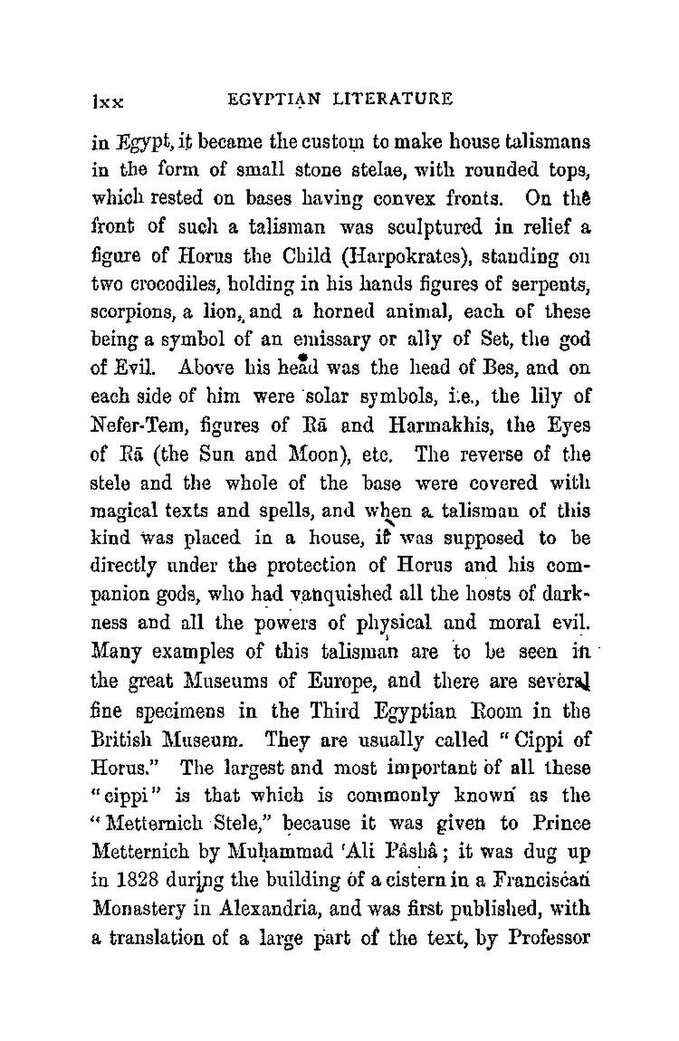in Egypt, it became the custom to make house talismans in the form of small stone stelae, with rounded tops, which rested on bases having convex fronts. On the front of such a talisman was sculptured in relief a figure of Horus the Child (Harpokrates), standing on two crocodiles, holding in his hands figures of serpents, scorpions, a lion, and a horned animal, each of these being a symbol of an emissary or ally of Set, the god of Evil. Above his head was the head of Bes, and on each side of him were solar symbols, i.e., the lily of Nefer-Tem, figures of Rā and Harmakhis, the Eyes of Rā (the Sun and Moon), etc. The reverse of the stele and the whole of the base were covered with magical texts and spells, and when a talisman of this kind was placed in a house, it was supposed to be directly under the protection of Horus and his companion gods, who had vanquished all the hosts of darkness and all the powers of physical and moral evil. Many examples of this talisman are to be seen in the great Museums of Europe, and there are several fine specimens in the Third Egyptian Room in the British Museum. They are usually called “Cippi of Horus.” The largest and most important of all these "cippi” is that which is commonly known as the "Metternich Stele,” because it was given to Prince Metternich by Muhammad ‘Ali Pashâ; it was dug up in 1828 during the building of a cistern in a Franciscan Monastery in Alexandria, and was first published, with a translation of a large part of the text, by Professor
